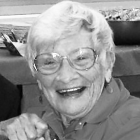
Mary Anne Zak
When Suffield’s economy was primarily agricultural and the top crop was tobacco, there were occasional years when Suffield schools did not open until tobacco was harvested. Children in tobacco-growing families and neighborhoods participated in the harvesting. And school could not start until their work was done. Weather set the opening date of school.
Browsing through old town reports, diaries and scrapbooks one finds glimpses into the history of Suffield education. In the earliest colonial days of towns like Suffield, “dame” schools were taught during the summer by a few women in their simple homes. At best, the women taught basic reading and writing skills if they possessed such skills themselves. Otherwise, the dames provided a simple level of child care.
According to the Ruggles Anniversary publication it was “probable” that the first public school opened in May of 1696 with Anthony Austin as principal. On the other hand, Sheldon said that William Trowbridge was “probably” the first schoolmaster in Suffield. He was invited to teach in town at a salary of ten pounds per annum for five years, plus a sum “for each scholar, according to law.” The town also granted Trowbridge .50 acres on January 2, 1682½, thereby establishing its practice of supporting teachers and ministers. Trowbridge apparently did not remain in town, however, and died in 1690. (The unusual date of 1682½ resulted from changing the Julian calendar to the Gregorian.)
Not everyone agreed that townspeople should support education. Construction of the first schoolhouse was reported to have begun in 1702 but “…votes (to build the school) were often modified and rescinded… School was irregularly sustained.” The first schoolhouse measured a modest 16’ x 20’ and was 6 feet high. In 1939, two hundred and thirty-seven years later, votes to build Suffield’s first high school were rescinded, modified and reinstated.
In 1713 voters agreed that “ye Schooll shall be kept in High Street. There shall be one good school constantly kept in High Street and that there shall none goe to this school, until they are six years of age, nor then neither, except they be so farr Entered in learning as to spell in indfferantly in ye primer…”
School would be open “… a year at a time in each division… ye school next kept in Feather Street, (East Street)1 yr, then one year next in Crooked Lane (Mapleton) and then next one yr West Division and so to High Street again.” How the system worked has not surfaced. Information here comes from the priceless Documentary History of Suffield by Hezekiah S. Sheldon.